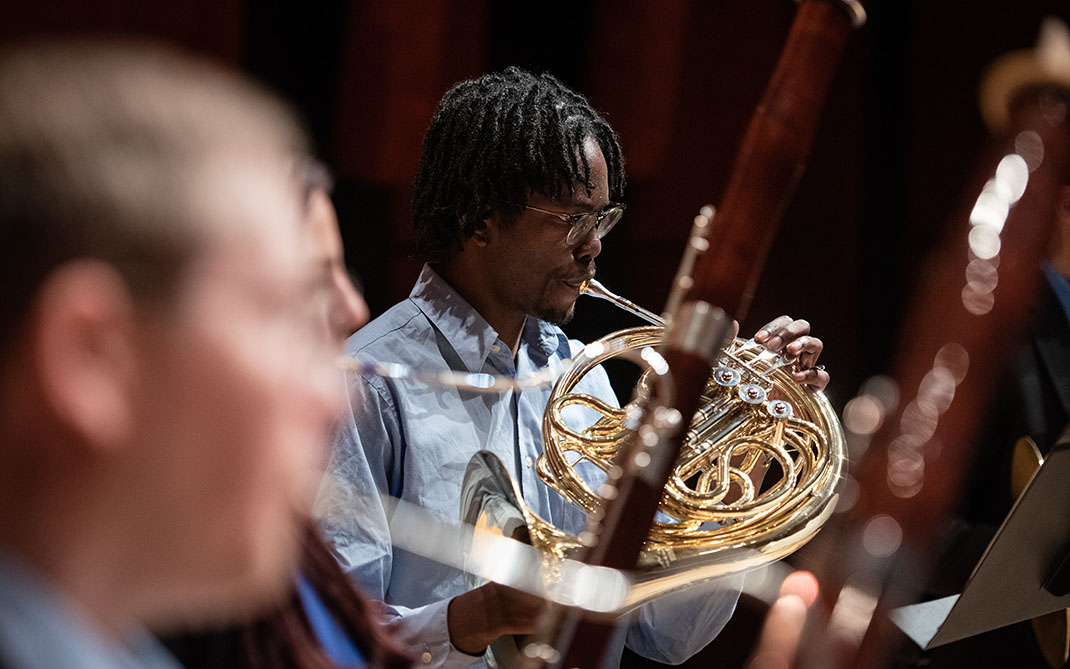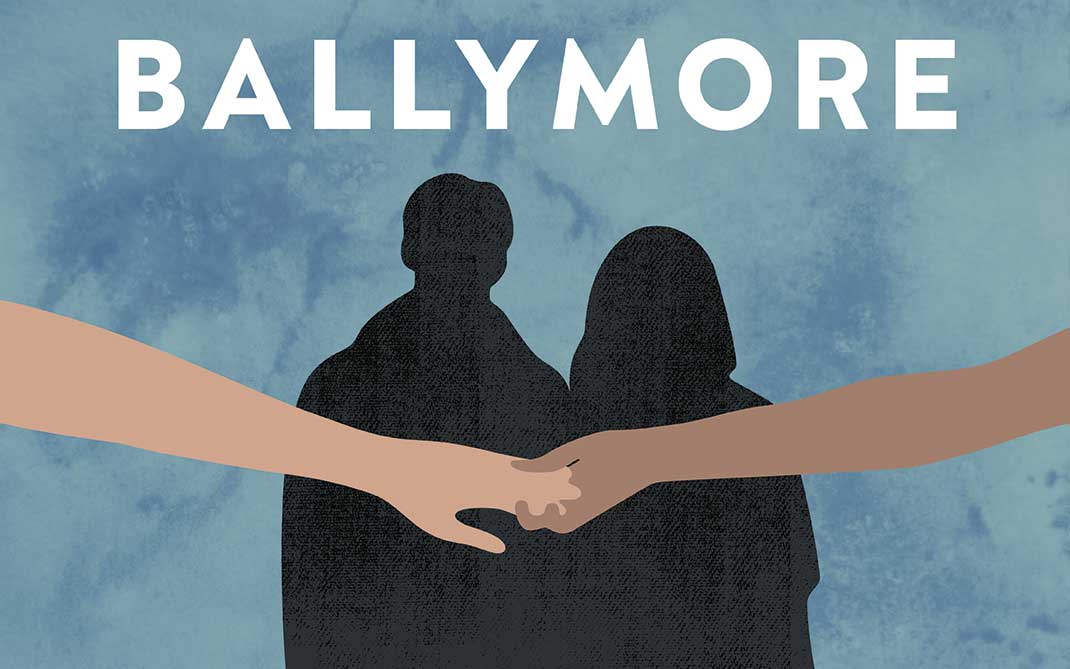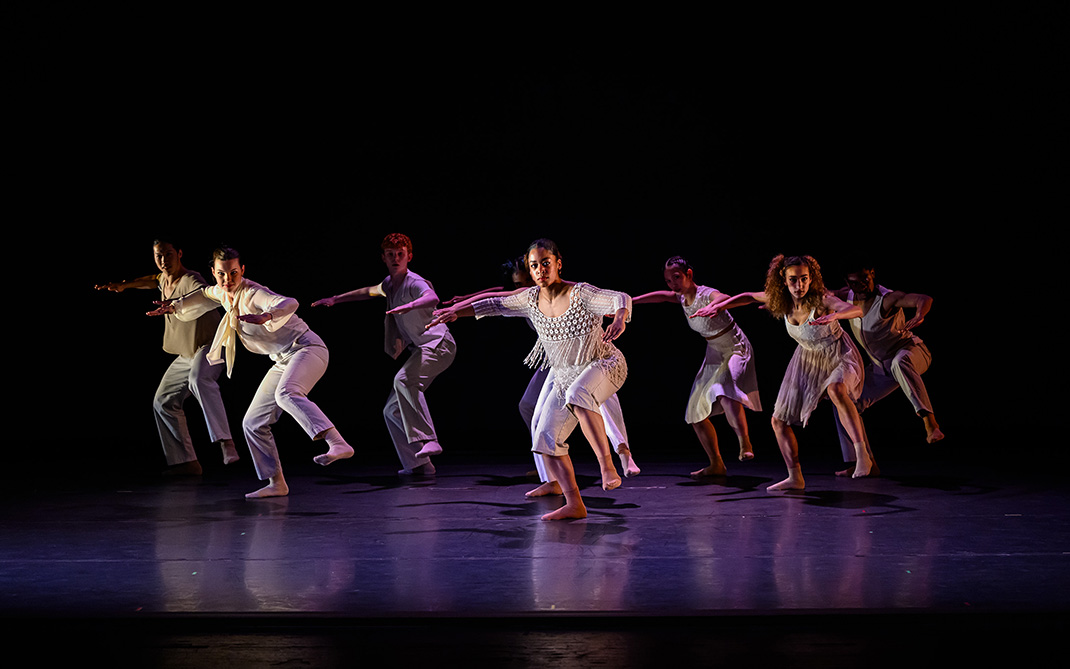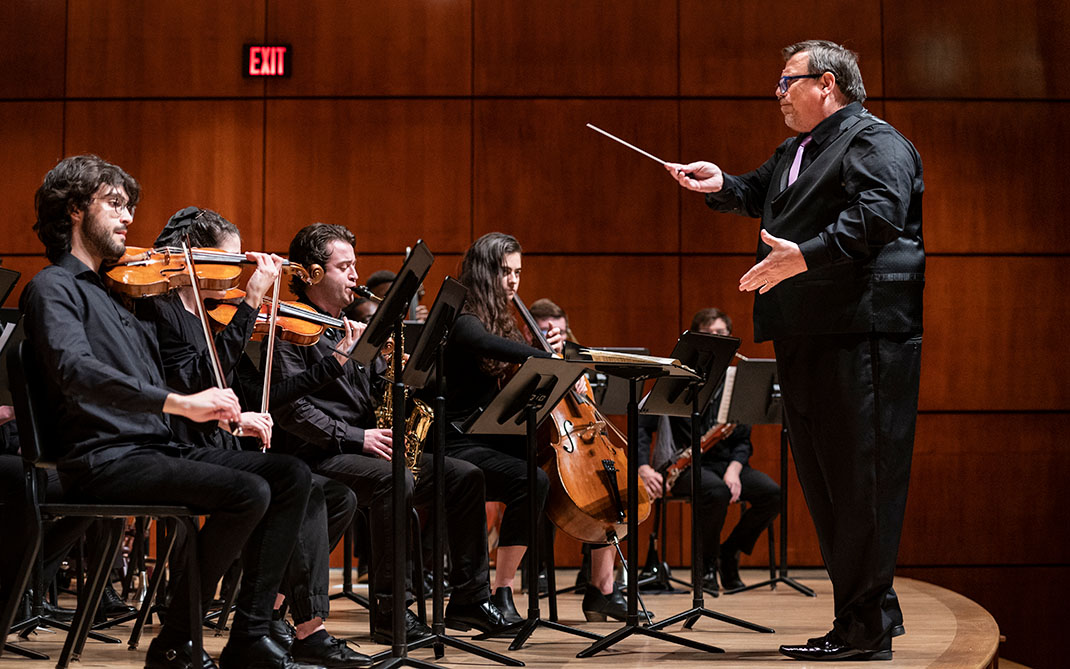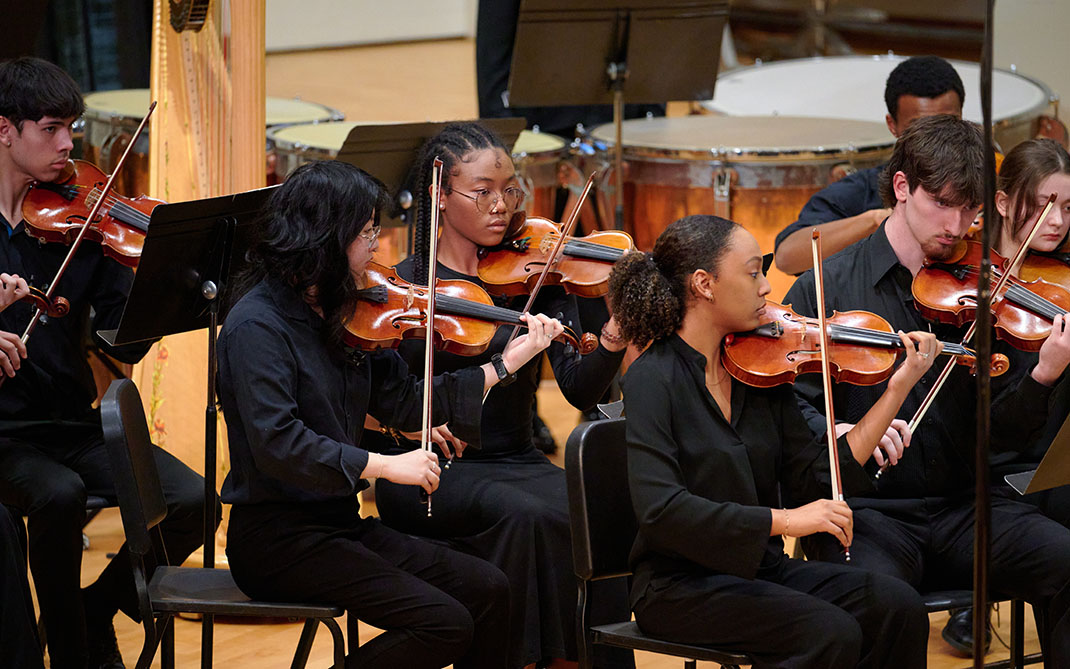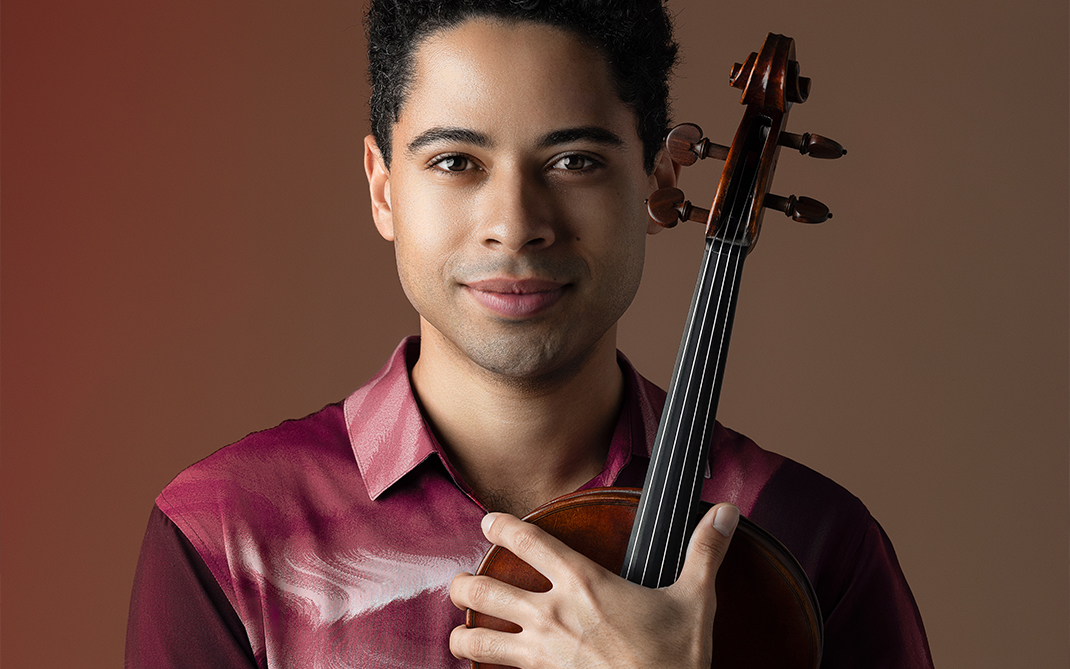Ballet alumna Nena Gilreath helps Black dancers take center stage
Between being an entrepreneur, artistic director and dancer, ballet alumna Nena Gilreath (B.F.A. Dance ’84) has spent her career immersed in dance. After graduating from the School of Dance, Gilreath spent six years with prominent dance companies including Ruth Mitchell Dance Theatre, Dance Theatre of Harlem and Atlanta Ballet. However, seeing the need for greater racial diversity in ballet, in 1990 Gilreath co-founded Ballethnic Dance Company and Academy of Dance with her husband and choreographer Waverly T. Lucas to provide affordable, high-quality instruction and performance opportunities to underrepresented communities.
Over the past 31 years, Ballethnic has grown into a company and dance school focused on producing unique and exciting dance experiences for their audiences and students by fusing classical ballet, African dance and other artistic influences. Gilreath and Lucas have also worked to expand their community engagement by including programs that bring dance performances, workshops and classes to diverse audiences that otherwise would not have access to these experiences.
We caught up with Gilreath to learn more about her career, time at UNCSA and how her company has been staying creative during the pandemic.
What have been some highlights of your career so far?
I fondly remember dancing with Dance Theatre of Harlem during their Metropolitan Opera Premiere. This was one of my scariest times on stage, and my company debut was at the Metropolitan Opera. I was the right size at the right time for the opportunity when a seasoned dancer had to be replaced because of an injury. At the time, I was not a seasoned dancer, especially dancing in such a large, internationally-renowned company. I learned “Stars and Stripes,” the first regiment, and “Creole Giselle” in a short time. I was visibly shaking on that front row as the curtain rose. I made it and dancing on the Met stage is certainly a highlight of my life. I then traveled to Salzburg, Austria, and was a member of the cast of the filming of “Creole Giselle.”
Another great highlight for me is when Ballethnic was selected to perform as part of the Cultural Olympiad in Atlanta in 1996. Ballethnic received a substantial commission to work with internationally-known choreographer Irene Tassembedo. We were able to collaborate with her company to create a world premiere that featured her company and Ballethnic. It was a fusion of ballet, modern and African dance. Additionally, my husband was able to showcase his work “Alonzo,” which highlights the similarities and the differences between ninjas and ballet dancers. It was exciting because we were presented on a world stage and reviewed in the New York Times. To prepare for this collaboration, Waverly and I were able to travel to Senegal in western Africa to study African dance and drum, which increased our confidence and tools as we continued to blend it with our style of dance.

Ballethnic Dance Company members at a distanced outdoor performance at the East Point Historical Society in December 2020.
COVID-19 has undoubtedly changed your industry. How have you adapted over the last year?
Surviving COVID-19 is an ongoing process, as we all know. The pandemic shut down our ability to produce the 30th anniversary performance of our signature ballet “The Leopard Tale.” It is an African American tale about surviving and coexistence. We are using the lessons from this ballet to reinvent Ballethnic.
After closing Ballethnic and not being able to complete our season, we started teaching online, and will continue that even when we reconvene. We are completing some small renovations in the office and painting the studios. We own our building in East Point, Ga. so that has enabled us to breathe easier. With the amazing support of The Chestnut Family Foundation, we can look at our operations holistically and implement some changes that we have not been able to do until now. We are also able to plan a more efficient season when we return. Without their support and other pandemic funding this would not have been possible. Ballethnic is using this pause in the world to dig deeper and to create the organization that we desire on every level by strengthening the infrastructure.
What are some challenges you've encountered in your career; how have you overcome them?
One of our biggest obstacles is funding. As leaders of this organization, we have always done the required work, we have the pedigree of training, the work ethic and the dedication; however, there has always been a disparity in funding. As a “Black” organization, we are always at the table when there are discussions around diversity and implementing diversity in programming in larger organizations. However, it has always been tough to secure adequate funding to sustain and promote our own organization and programming at the level that we deserve and desire.
As a 'Black' organization, we are always at the table when there are discussions around diversity and implementing diversity in programming in larger organizations. However, it has always been tough to secure adequate funding to sustain and promote our own organization and programming at the level that we deserve and desire.
Nena Gilreath
Ballethnic is Atlanta’s first and only professional African American founded and led Ballet Company, and the second in the world founded for a culturally-specific purpose. We fulfill a need to create more opportunities for Black dancers and dancers who are being overlooked and left out because of body typing and other variables. We also want to lead with an entrepreneurial spirit and to have a voice in our artform. We desire to explore fusion ballet with African dance concepts and create unique stories. We set out to do these things, and are still doing them.
Why did you choose UNCSA?
I feel as if UNCSA chose me. I did not know about the professional world of dance, but one of my neighbors was attending school there. This brought awareness to our local dance studio. I heard students talking about an upcoming audition at the studio and convinced my dad to take me to the audition. In spite of waking up to it snowing, he took me to the audition. This was a feat within itself because he was not a proponent of my pursuing dance. Dean Lindgren was conducting the audition and I was so excited that my energy was bumping off the walls. He noticed my energy and tested my stretch. My technique was not refined because at that time I had only been dancing for three years. My flexibility, enthusiasm and eagerness to learn made up any deficiencies in technique. It was the place for me.

Ballet alumna Nena Gilreath co-founded Ballethnic Dance Company and Academy of Dance in 1990 with the goal of providing affordable, high-quality instruction and performance opportunities to underrepresented communities.
How did UNCSA prepare you for your career?
UNCSA prepared me for a solid dance career because of the amazing schedule that we had to complete that concentrated on implementing solid codified dance techniques and instruction. We also received a well-rounded balance of ballet and modern dance techniques, and exposure to great guest instructors. The opportunity to audition for parts in “The Nutcracker” and Spring Dance taught me valuable auditions skills. Most of all, we had many opportunities to perform on campus and later and the Stevens’ Center. I am incredibly grateful for the academic rigor also. I loved my Science and French classes that made me as a teacher commit to helping dancers discover other talents and skills that will be beneficial to them.
What was your favorite UNCSA performance?
My favorite performance at UNCSA was when I was selected to perform in “Napoli” by Hans Brenna, the Danish ballet master, who set the ballets of August Bournonville. I was very surprised that I was selected because I was not as technically strong as many of my peers, because I had not danced as long. However, Brenna loved that I had a great deal of energy and joy when I danced, and that is why he selected me. It was a great confidence builder for me.
Where are some of your favorite campus spots?
My favorite spot at (U)NCSA was the Elephants and the Student Center. We worked so amazingly hard and we as students were so obsessed with the studios, it was nice to have places to blow off steam. Dances in the student center on the weekends were energized with fun and laughter. The Elephants gave us a space to gather, chat and to enjoy the outdoors.
My advice for students is to enjoy your time at UNCSA. It is one of the best times of your life, so work hard but also balance life with fun and laughter.
Nena Gilreath
What advice would you share with current students?
My advice for students is to enjoy your time at UNCSA. It is one of the best times of your life, so work hard but also balance life with fun and laughter. Take time to meet people from other departments because these will be your network of work associates. Also, take time to learn about the faculty and staff and pick a mentor to ask questions and learn about their careers.
Get the best news, performance and alumni stories from UNCSA.
SUBSCRIBE TO OUR NEWSLETTERS
March 24, 2021
